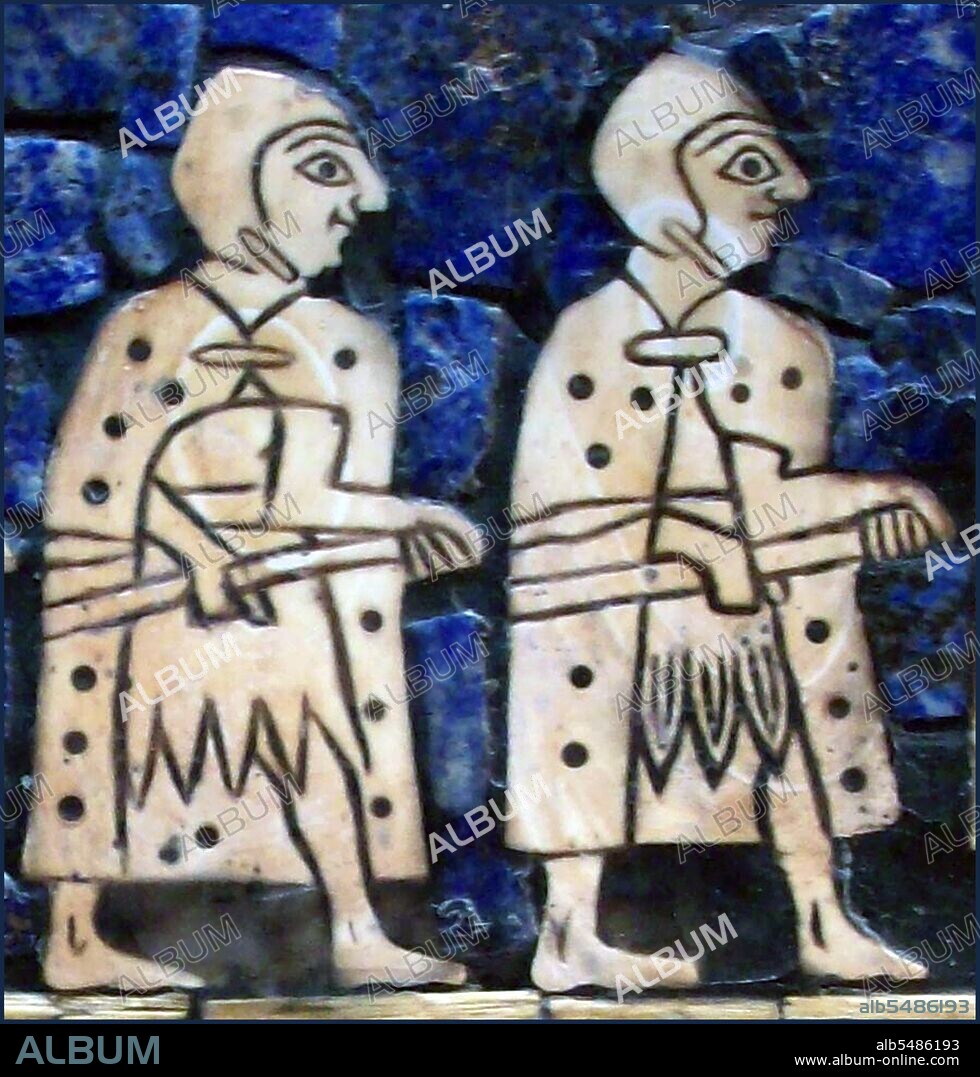alb5486193
Iraq: The Standard of Ur (also known as the 'Battle Standard of Ur', or the 'Royal Standard of Ur') is a Sumerian artifact excavated from the Royal Cemetery in the ancient city of Ur, located in modern-day Iraq to the south of Baghdad (c.2250 BCE)-detail, two Sumerian soldiers

|
Añadir a otro lightbox |
|
Añadir a otro lightbox |



¿Ya tienes cuenta? Iniciar sesión
¿No tienes cuenta? Regístrate
Compra esta imagen

Título:
Iraq: The Standard of Ur (also known as the 'Battle Standard of Ur', or the 'Royal Standard of Ur') is a Sumerian artifact excavated from the Royal Cemetery in the ancient city of Ur, located in modern-day Iraq to the south of Baghdad (c.2250 BCE)-detail, two Sumerian soldiers
Descripción:
Traducción automática: El Estandarte de Ur sobrevivió solo en una condición fragmentaria, ya que los efectos del tiempo durante los últimos milenios habían deteriorado el marco de madera y el pegamento bituminoso que había cementado el mosaico en su lugar. El peso del suelo había aplastado el objeto, fragmentándolo y rompiendo los paneles de los extremos. La forma actual del artefacto es una reconstrucción, que presenta una mejor suposición de su apariencia original. Se ha reconstruido como una caja de madera hueca que mide 21,59 centímetros (8,50 pulgadas) de ancho por 49,53 centímetros (19,50 pulgadas) de largo, con incrustaciones de un mosaico de conchas, piedra caliza roja y lapislázuli. La caja tiene forma irregular con extremos en forma de triángulos truncados, haciéndola más ancha en la parte inferior que en la superior. Los paneles de mosaico con incrustaciones cubren cada lado largo del estándar. Cada uno presenta una serie de escenas que se muestran en tres registros, superior, medio e inferior. Los dos mosaicos han sido apodados 'Guerra' y 'Paz' por su tema, respectivamente, una representación de una campaña militar y escenas de un banquete. Los paneles en cada extremo originalmente mostraban animales fantásticos, pero sufrieron daños significativos mientras estaban enterrados, aunque desde entonces han sido restaurados.
The Standard of Ur survived in only a fragmentary condition, as the effects of time over the last several millennia had decayed the wooden frame and bitumen glue which had cemented the mosaic in place. The weight of the soil had crushed the object, fragmenting it and breaking the end panels. The present form of the artifact is a reconstruction, presenting a best guess of its original appearance. It has been reconstructed as a hollow wooden box measuring 21. 59 centimetres (8. 50 in) wide by 49. 53 centimetres (19. 50 in) long, inlaid with a mosaic of shell, red limestone and lapis lazuli. The box has an irregular shape with end pieces in the shape of truncated triangles, making it wider at the bottom than at the top. Inlaid mosaic panels cover each long side of the Standard. Each presents a series of scenes displayed in three registers, upper, middle and bottom. The two mosaics have been dubbed 'War' and 'Peace' for their subject matter, respectively a representation of a military campaign and scenes from a banquet. The panels at each end originally showed fantastical animals but they suffered significant damage while buried, though they have since been restored.
Crédito:
Album / Pictures From History/Universal Images Group
Autorizaciones:
Modelo: No - Propiedad: No
¿Preguntas relacionadas con los derechos?
¿Preguntas relacionadas con los derechos?
Tamaño imagen:
4050 x 4231 px | 49.0 MB
Tamaño impresión:
34.3 x 35.8 cm | 13.5 x 14.1 in (300 dpi)
Palabras clave:
ANTIGÜEDAD • ANTIGÜEDADES • ANTIQUITY • ART • ARTE • ARTES • ASIA • ASIATICO • ESTANDARTE DE UR • HISTORIA • HISTORICO • IRAK • IRAQUI • LAPISLAZULI • MADREPERLA • MESOPOTAMIA • MESOPOTAMIAN • MOSAICO • SUMERIAN • UR
 Pinterest
Pinterest Twitter
Twitter Facebook
Facebook Copiar enlace
Copiar enlace Email
Email
